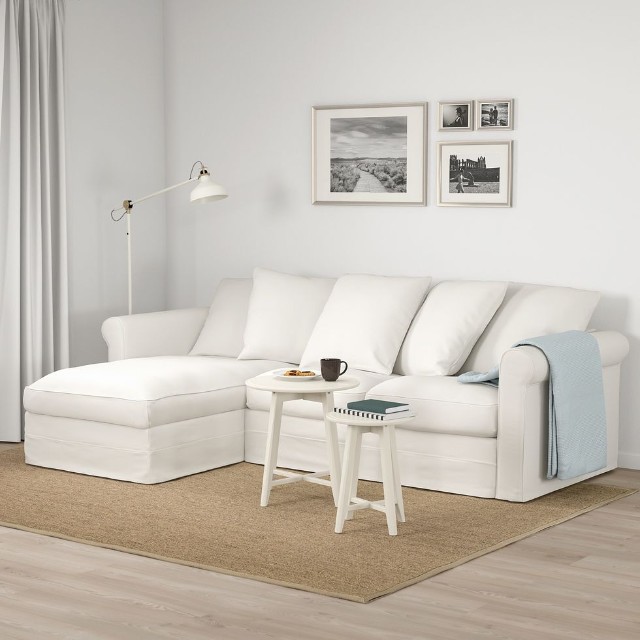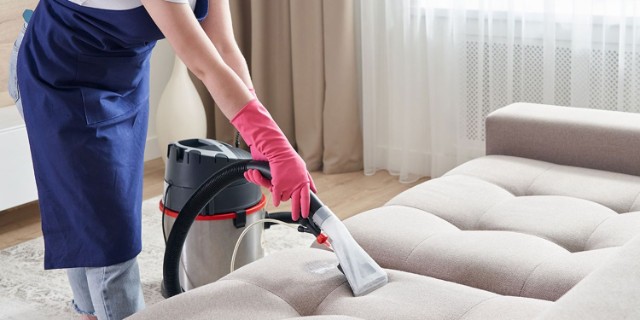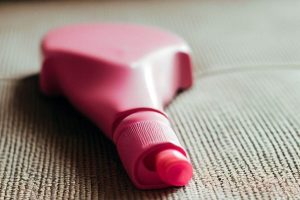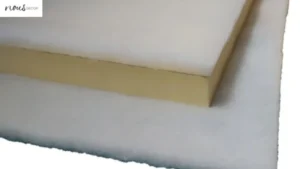Having a white sofa can be a great way to add light and brightness to your living room. But, unfortunately, it’s also more likely to show dirt and stains. White padding requires regular cleaning and maintenance in order for it to look its best.
If you’re wondering how to clean your futon seat, I’m here to help! In this article, I’ll offer a step-by-step guide on How To Clean White Sofa safely and effectively.
I’ll cover what supplies are needed, how to spot-clean stains, deep-cleaning the fabric or leather padding, drying the fabric or leather after cleaning, and protecting the padding from future dirt and stains.
With these steps in mind, you’ll have your white sofa looking bright and beautiful in no time with Nousdecor!
Key Takeaways of How To Clean White Sofa
- Regular cleaning and maintenance is necessary for white padding
- Use appropriate cleaning supplies and techniques for different types of stains and materials
- Hoover the entire surface of the sofa regularly to prevent dirt and dust buildup
- Apply protective spray or treatment to keep the padding looking new and guard against stains and damage

Gather Your White Couch Cleaning Supplies
Every How To Clean Sofa guide should have a gathering up cleaning supplies step, and let’s get this white couch sparkling! To ensure that you can remove stubborn dirt and stains from your Best Sofa, you’ll need detergent specifically designed for fabrics, a soft cloth or sponge, a small brush with soft bristles, clean water, and an absorbent towel.
You may also want to have some baking soda, white vinegar (see vinegar for fabric sofa cleaning for more vinegar guide), and upholstery cleaner available in case of embedded odors. Make sure all these items are within easy reach before you start cleaning your couch.
Next step is to prepare the white futon seat for cleaning. Vacuum the entire surface with the padding attachment on your hoover cleaner. This will help remove dust and other particles that can clog the fabric fibers if not removed first.
If there are any spots or dirty spots on the cushion covers, pretreat them with a small amount of stain remover by gently massaging it into the fabric using a soft brush or cloth. Allow it to sit for about five minutes before wiping away any excess residue with a dampened cloth or sponge.
Now your white futon seat is ready to be cleaned!
Prepare to Clean Your Couch: Sofa Cushions Removal & Vacuuming
Before cleaning your white couch, there are a few steps you need to take in order to prepare it. Firstly, remove all of the pillows and cushions from the futon seat, setting them aside for later.
Secondly, use a hoover cleaner with an padding attachment to thoroughly clean the entire surface of the futon seat. This will ensure that any dirt or dust particles that have accumulated on the fabric are eliminated prior to beginning the actual cleaning process.
If your white futon seat is suffering from itchiness, maybe consider checking out our article on remove itchiness from your sofa before moving on!
Step 1: Remove Pillows and Cushions
Start by taking off the pillows and cushions on your white couch.
Make sure to take them to a place that makes it easy for you to hoover the fabric, such as an outside patio or garage. Empty any pockets from these items, as well. Dispose of any trash or debris before proceeding with cleaning your white futon seat.
Additionally, if some pillows and cushions are meant for dry-cleaning only, have them professionally cleaned before returning them to the couch. Doing so will ensure that all of the surfaces being cleaned match in color and texture.
Once you’ve taken care of all the pillows and cushions, it’s time for the next step: hoovering the futon seat.
Step 2: Vacuum the Sofa
Take a deep breath and get ready to hoover your beloved sofa! The key to keeping your white futon seat looking its best is regular maintenance. Vacuuming is the easiest way to maintain a clean and vibrant look.
To get the job done right, it’s important to use the correct tools.
| Tool | Use | Benefits |
| Upright Vacuum Cleaner | General cleaning & removing pet hair | Quickly cleans large areas; Easy maneuverability & reach; Powerful suction for deep-cleaning |
| Crevice Tool/Brush Attachment | Cleaning hard-to-reach places like crevices, seams, and under cushions | Long narrow nozzle fits into tight spaces; Bristles remove dirt from padding fibers without damaging fabric |
| Soft Brush Attachment | Remove dust on delicate surfaces such as silk or velvet | Protective bristles won’t damage delicate fabrics; Easily removes dust and light debris without agitating fibers; Creates static electricity which attracts dust particles |
Using these tools correctly will ensure that you effectively clean all of the nooks and crannies of your couch while leaving a pristine finish. With regular hoovering, you can easily keep your white futon seat spotless!

Step 3: Spot Clean a White Sofa All the Stains & Spills
To effectively spot-clean a white futon seat, begin by assessing the dirty spots and determining which cleaning solution to use.
For small red wine stain spots on non-porous materials such as leather or vinyl, an alcohol-based cleaner should do the trick. For larger areas of dirty spot, try a combination of dish soap and warm water on a damp cloth.
Avoid using bleach as too much can cause discoloration and damage the material. Additionally, it is important to keep in mind that some fabrics may require special cleaning agents so always read labels before applying any products.
After selecting the appropriate solution for your specific dirty spot, apply directly onto the affected area with a clean rag or sponge. Be sure to rub gently in order to avoid causing any further damage to the fabric.
Once you have applied the cleaner, allow it to sit for five minutes before rinsing with cold water and blotting dry with a cloth or paper towel. With careful attention and proper spot-cleaning techniques, your white futon seat will be looking like new again soon!
If the dirty spots on your futon seat are caused by your little kitty’s mess, consider checking out our article on cleaning cat urine off sofa now!
As this process only works on superficial dirt and grime build up however, if more extensive deep-cleaning is required then additional steps must be taken such as shampooing or steam cleaning padding fabric.
Step 4: Deep Clean a Fabric Couch Upholstery
Now that we’ve removed stains on our white sofa, it’s time to move onto deep-cleaning the padding.
For best results, I recommend doing this once a month or more frequently if you have pets or children. Here are 3 simple steps to get your sofa looking and feeling like new again:
- Vacuum the entire surface of your couch with an padding attachment. This will remove any debris and dust that has accumulated over time and leave your couch looking refreshed.
- Mix a gentle detergent, such as dish soap or laundry detergent, with warm water in a bucket.
- Dip a soft cloth into the solution and use it to scrub away any remaining dirt or stubborn stains from your furniture’s padding fabric.
- Be sure not to saturate the fabric; just enough liquid should be used to loosen dirt particles without leaving behind wet patches on your futon seat.
- Once you’ve finished scrubbing each area of fabric, use another clean cloth dampened with plain water to rinse off the soapy residue left behind by earlier cleaning efforts.
- Blot dry with a towel and let your newly cleaned futon seat air-dry completely before using it again or putting back its cushions and throw pillows!
With these simple steps, you can easily keep your white futon seat looking brand new for years to come!
Up next is treating leather padding – stay tuned for tips on how to preserve its luxury look and feel!
Step 5: Treat the Leather Upholstery
Leather padding requires special care in order to keep it looking luxurious and pristine, so let’s explore how to treat the leather for optimal results.
First, you’ll need some leather conditioning wipes or a soft cloth with a small amount of gentle soap mixed with warm water. You should never use harsh cleaning agents as they can damage the leather’s protective finish or discolor it.
Gently wipe down the surface of your sofa using circular motions. Make sure that you don’t soak the cloth or leave any dripping wet spots on the futon seat as this could cause water marks or dirty spoting. Once you’ve wiped down all surfaces, take a dry cloth and go over them again to remove any remaining moisture.
If there are any tough dirty spots on your leather padding, try using a specialized cleanser specifically designed for leather furniture such as saddle soap or leather-friendly detergent and follow all instructions on the packaging carefully before use. When finished cleaning, allow your sofa time to air dry fully before putting back into service.
Treating your white leather futon seat regularly will help maintain its luxurious appearance and prevent dirt from building up over time.
Proper care is key when dealing with delicate materials like leather; following these steps will ensure that your couch looks great for years to come!
Step 6: Dry the Upholstery
Once you’re done wiping down the padding, take a dry cloth and go over it again to remove any remaining moisture. Be sure not to use any excess pressure as that could damage the leather fibers.
Also, be mindful of the direction in which you are drying the surface – this helps prevent water spots or streaks from forming on your futon seat’s padding. After getting most of the moisture out of the leather, it’s time to move on to protecting your furniture.
To finish drying your white futon seat, you can use a blow dryer set at its lowest setting and held away from all surfaces by at least six inches. This will help evaporate any leftover drops of water quickly and effectively without damaging your couch’s leather fibers. Make sure to also keep it moving while using it so you don’t leave any hot-spots behind!
Once the entire surface has been dried properly, make sure to clean off any excess dirt or debris that may have been loosened during cleaning with a hoover cleaner or soft brush attachment. Then, let it sit for a bit, as this will help protect against further wear and tear and ensure that your white futon seat looks its best for years to come.
Applying a quality protective spray after drying is essential in keeping your padding looking like new for longer periods of time – so make sure to do this step as well! With these tips in mind, you’ll be able to keep your white futon seat looking great with minimal effort needed for upkeep.
Moving on to protecting your furniture is an important next step in ensuring its longevity.

Step 7: Protect the Upholstery
To protect your padding from wear and tear, you’ll want to apply a quality protective spray after it’s completely dry. This will help guard against dirt, grease, dirty spots, and other materials that can damage the furniture over time.
Before applying any product, make sure to test a small area first to make sure that the fabric won’t be discolored or damaged. You should also read the labels carefully in order to understand how often to reapply the protective spray for best results.
When selecting a protection product for your padding, choose one that is designed specifically for use on fabrics such as microfiber or leather. Avoid using products meant for outdoor furniture or metal surfaces as they may not be suitable for delicate fabrics like velvet or linen.
Consider purchasing a dirty spot-resistant spray or treatment if your futon seat is prone to spills and dirty spots – this can help prevent permanent damage from occurring in case of an accident.
In addition, it’s important to hoover regularly so that dirt and dust don’t build up on the surface of your white futon seat over time. Be sure to use a soft brush attachment when hoovering sensitive fabrics so as not cause any scratches or tears in the material.
Lastly, try using natural cleaning ingredients such as lemon juice when tackling tough spots – this method allows you to avoid harsh chemicals which can further damage delicate fabric fibers while still removing stubborn marks effectively.
By following these simple steps you’ll keep your white futon seat looking clean and beautiful year after year! Taking proper care of your upholstered furniture will ensure it lasts longer and retains its original colour more easily too – something all homeowners strive for when investing in new pieces!
Your futon seat is a velvet sofa? Check out our article on maintain your velvet sofa for a more specific guide now!
Frequently Asked Questions
Conclusion
I’m sure now that my white futon seat is looking good as new. I’ve gathered the necessary supplies, prepped the futon seat for cleaning, spot-cleaned any dirty spots, given it a deep-clean and treated leather padding if needed. Finally, I dried it off with a soft cloth and used a protectant to guard against future dirty spots.
It’s been hard work but well worth it – now I can enjoy my sparkling clean white futon seat!






![Sofa vs Couch: Which Is BEST Choice For You? [2024]](https://nousdecor.com/wp-content/uploads/2021/06/Sofa-vs-Couch-300x197.jpg)